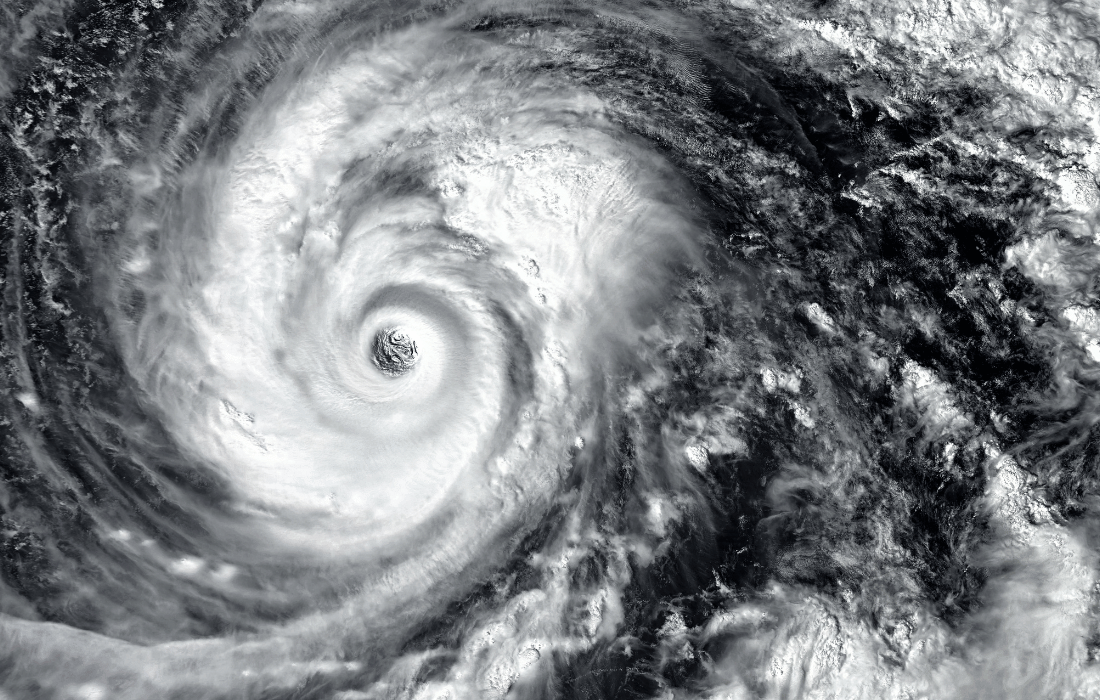Hurricane Helene’s remnants wreaked havoc on Western North Carolina, capping off three days of relentless rain from September 25-27, 2024. This historic weather event brought unprecedented flooding and devastation to the mountains and southern foothills of North Carolina, Georgia, and Tennessee, with rainfall totals and river levels that rivaled the worst hurricanes in the state’s history. The extreme precipitation, intensified by the interaction with high terrain, left large stretches of highways underwater and several sections completely gone, prompting officials to advise that “all roads in western NC should be considered closed.” The true scope of this disaster will take years to fully document and recover from, but early assessments reveal a catastrophic impact.
Hurricane Helene’s Setup for Relentless Rain
The disaster originated from rains and winds from Hurricane Helene, which was at Category-1 strength with its center over 500 miles away from Western North Carolina just days before. On September 25, as Helene approached the Florida coast, a stalled cold front had already set up over the southern Appalachians, bringing heavy showers to the area. This front acted as a moisture conveyor, drawing in tropical air from Helene’s outer bands. The slow movement of the front allowed for continuous rain to fall over the region, setting the stage for extreme flooding.
As Helene moved inland, its massive size, combined with the high-humidity environment over the warm Gulf of Mexico, created a broad southeasterly circulation that pushed even more moisture into the saturated mountain slopes. By the time the heaviest rain fell on Friday, September 27, the ground was already soaked, and local rivers and streams had risen to daily record levels.
Extreme Totals and Flooding
The sheer amount of rainfall during this period was beyond anything anyone could have expected. Over three days, much of the mountain region received more than eight inches of rain, with totals exceeding a foot in parts of Alleghany, Yancey, and McDowell counties. The highest confirmed accumulation came from the North Carolina Forest Service’s RAWS station in Busick, which recorded an astounding 31.33 inches of rain. This amount is likely to become the new benchmark for three-day rainfall totals in the region.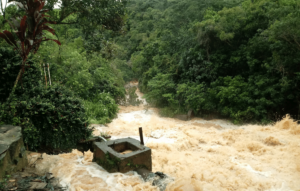
At the Asheville Regional Airport, nearly 14 inches of rain fell, equating to nearly three months’ worth of precipitation in just three days. Rainfall amounts of 20 inches or more were observed at multiple locations, setting new records across the region and prompting flash flood emergencies in 21 counties. For many weather stations, it marked the wettest three-day period on record.
Environmental Impact
The environmental consequences were severe and widespread. The flooding caused rivers like the French Broad, Catawba, Swannanoa, and Watauga to crest near or above their major flood stages, inundating towns, sweeping away bridges, and devastating landscapes.
Flooding and Landslides
The relentless rain caused catastrophic flooding that overran rivers and streams, affecting both lower and higher-elevated areas and communities. Landslides followed, with mud and debris flows covering roads and railways, and in some cases, burying homes. Towns like Chimney Rock and Lake Lure experienced destructive waves of water, mud, and debris, while evacuations were ordered downstream of several dams due to the threat of structural failure.

Soil Erosion
The continuous precipitation eroded the region’s topsoil, significantly impacting both natural and agricultural landscapes. The sediment washed into rivers and lakes increased turbidity, harming aquatic ecosystems by reducing light penetration and disrupting the habitats of fish and other aquatic life. In certain areas, sediment deposition completely altered river channels, posing long-term risks for future flooding.
Impact on Local Ecosystems
Western North Carolina’s rich biodiversity faced significant challenges. Flooding disrupted the habitats of numerous plant and animal species, while some areas saw a surge in invasive species that took advantage of the disturbed environment. The aquatic life in particular struggled with the sudden changes in water quality, which impacted breeding grounds and migration routes. For example, trout populations in cold-water streams will have faced severe stress due to increased sediment and decreased oxygen levels.
Widespread Tree Damage
The combination of high winds, relentless rain, and extensive soil erosion during Hurricane Helene resulted in the toppling of thousands of trees across Western North Carolina. As the storm brought tropical-storm-force winds exceeding 60 mph, with some gusts reaching over 100 mph in higher elevations like Mount Mitchell, the saturated soil struggled to hold trees upright. The excessive rainfall had already loosened the ground, making it easier for the powerful winds to uproot even the sturdiest of trees.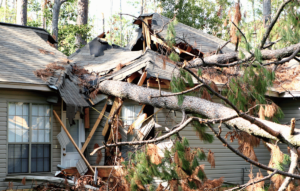
The fallen trees blocked roadways, downed power lines, and damaged buildings, adding to the devastation experienced by communities. In some areas, the sheer number of downed trees made rescue and recovery efforts even more challenging, as emergency responders struggled to clear blocked roads and reach isolated areas.
The loss of mature trees also had severe ecological consequences. Trees play a crucial role in stabilizing soil, reducing erosion, and maintaining the integrity of riverbanks. With so many trees uprooted, the risk of further soil erosion and landslides has increased, particularly in steep and mountainous regions. This loss of natural stability could lead to long-term environmental challenges, such as increased sedimentation in rivers and streams, which can harm aquatic ecosystems and disrupt the water supply.
Moreover, the fallen trees left behind a significant amount of debris, which poses ongoing risks during future storms, as it can block drainage systems and exacerbate flooding. The extensive tree loss also impacted local wildlife, which relies on forests for shelter and food. The destruction of these habitats adds another layer of complexity to the region’s recovery efforts, emphasizing the need for sustainable reforestation and land management practices moving forward.
Community Consequences
The human impact was just as devastating as the environmental effects. Many lives were lost – estimates are currently over 200 with hundreds or as many as thousands still missing – and almost everyone who survived the disaster throughout the region has and is still currently experiencing extreme levels of disruption to their lives and livelihood.
Damage to Homes and Infrastructure
Thousands of homes and businesses suffered from water damage, while many roadways were left completely impassable due to landslides and flooding. Many communities were cut off from emergency services, further complicating rescue and relief efforts. The extent of infrastructure damage was staggering and is still being revealed as days pass, with some areas expected to take years to recover to normalcy.
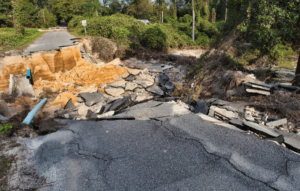
Agriculture and Livelihoods
The agricultural sector, already under stress from changing weather patterns, was hit hard. Flooded fields and damaged infrastructure caused significant crop and livestock losses, with farmers in rural areas struggling to salvage what they could. This disruption extended beyond individual farms, affecting the broader economy and food supply chains. Rebuilding efforts will need to prioritize soil restoration and resilient farming practices to ensure long-term sustainability.
Health Concerns
Floodwaters carried hazardous materials, from sewage to industrial contaminants, raising concerns over water quality and public health. Mold growth in water-damaged buildings is spreading rapidly, inevitably creating respiratory issues and further compounding the disaster’s toll on people’s health. Ensuring access to clean water and healthcare remains a top priority in the recovery process.
Recovery Efforts and Challenges
Efforts to address the immediate aftermath include rescues and debris removal, but the road to recovery will be long and complex. The scale of the damage overwhelmed local resources overnight, necessitating support from federal agencies, non-profits, and community organizations from across several different states. In addition to rebuilding infrastructure, the restoration of natural areas, such as reforestation and soil stabilization, will be crucial for preventing future landslides, sinkholes, and other natural hazards.
Climate Change and Future Risks
Hurricane Helene’s impact brings into focus the growing risks associated with climate change, particularly for inland areas previously considered less vulnerable to hurricanes. As global temperatures rise, so does the potential for extreme weather events with higher rainfall totals, resulting in more frequent and severe inland flooding. The rapid intensification of Helene and the staggering rainfall it brought underscore the need for better climate resilience planning.
Closing Thoughts
Hurricane Helene’s aftermath in Western North Carolina stands as a stark wake-up call of the dangers posed by extreme weather and the need for proactive measures to mitigate future risks. The disaster has set new records and will shape the region’s environmental and community resilience strategies for years to come. Moving forward, a multi-faceted approach will be necessary, combining infrastructure improvements, sustainable land management, and public education to better prepare for and adapt to the changing climate.
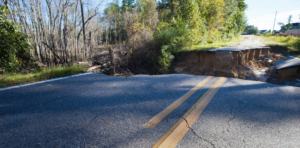
This storm is a call to action: we must build a more resilient and sustainable future, not only for Western North Carolina but for all regions facing similar risks. Supporting local efforts to rebuild, advocating for climate-resilient policies, and fostering a culture of preparedness will help ensure that future storms do not result in another Helene-level catastrophe.

